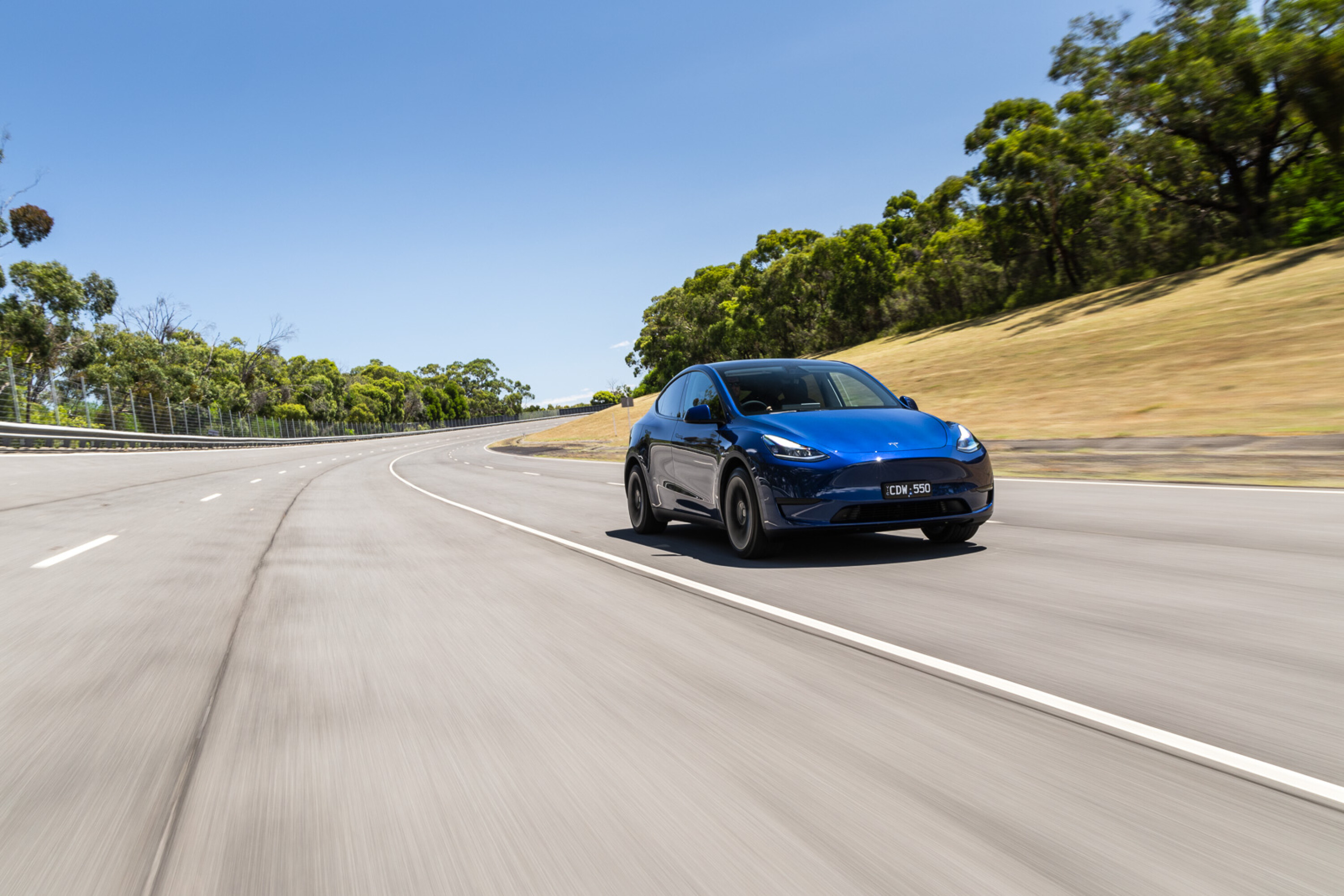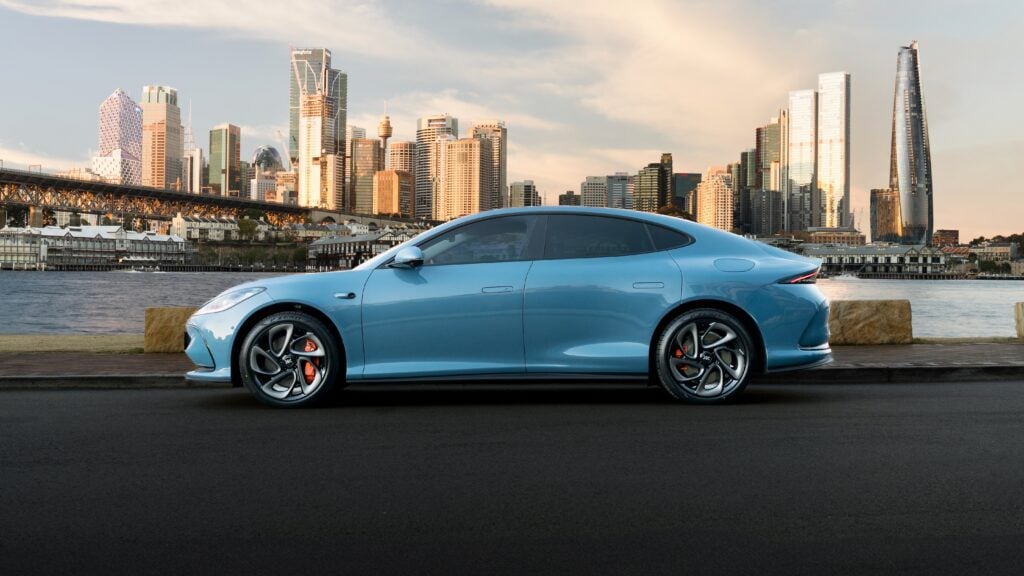
Are electric cars expensive to maintain?
Electric vehicles have fewer parts than a conventional petrol or diesel car, so they should cost a lot less to service and maintain, right? Here’s a guide to just what that really means.
Snapshot
- EVs donu2019t need to contend with oil changes, spark plugs, belts, etc.
- EVs still need routine maintenance for a range of u2018consumablesu2019
- Some car brands require similar servicing intervals and costs to ICE
According to Forbes [↗], an EV drivetrain contains around 20 moving parts, in contrast to traditional internal combustion engine (ICE) vehicles that typically have more than 2000.
As vehicles move further towards ‘computers on wheels’, which parts of our cars will still need physical servicing? What’s required with servicing an EV and is it cheaper than maintaining an ICE or hybrid car?
JUMP AHEAD
- ?️ Is EV servicing really better than ICE?
- ? How long do batteries last?
- ? Time to make the electric switch?

?️ What does EV servicing include?
The good
- EVs have significantly fewer parts required to maintain, theoretically more reliable
- Dedicated EV-designed tyres reduce the load with more durable materials
- Regenerative braking limits brake pad wear on all EVs
- Some parts, such as transmission fluid and brake pads, have a longer lifespan depending on usage
The not so good
- EVs still need servicing since they share many u2018consumablesu2019 with ICE that need routine attention
- Heavier weight and rapid torque can wear out tyres faster, when driven harder
- Minimal use of physical brakes can cause disc corrosion, potentially requiring a replacement
Similar to petrol and diesel vehicles, electric cars require routine maintenance on a number of electronics and consumable parts.
| Shared EV and ICE maintenance parts | |
|---|---|
| Electronics systems, software and sensors (including infotainment, lighting, passive and active safety systems, etc.) | Transmission gear fluid and parking brake |
| 12-volt auxiliary electronics battery | Power steering fluid and rack |
| Rotating tyres, checking tyre pressures, tread depth and alignment | Windscreen glass, wiper arms and blades, washer fluid |
| Brake fluid, pads, discs and callipers | HVAC system and air cabin filter |
| Suspension components (including joints, shock absorbers, springs, etc.) | Door hinges, latches, nuts and bolts |

While the above focuses on the shared consumables with ICE vehicles, electric vehicles’ critical drive unit systems also need attention from time-to-time.
| EV-only maintenance parts | |
|---|---|
| High-voltage battery pack coolant (replacement may not be required depending on the manufacturer) | Cooling fans and fluids |
| Battery pack health diagnostic | Charge port condition |
| Battery management system (BMS) software | Exterior pedestrian warning sound system (if equipped) |

? Is EV servicing cheaper?
The good
- EVs are generally cheaper to service
- Year/distance intervals sometimes longer than ICE
- Tesla doesn’t require frequent servicing, costs reportedly minimal
The not so good
- For some, the savings are not as significant u2013 despite longer intervals
- Some car brands set similar EV servicing prices compared to ICE
If electric cars have fewer parts to service, does that mean checkups are less frequent and cheaper than ICE vehicles?
Theoretically, it should – but it depends on the car manufacturer.
A growing number of brands, such as MG, Hyundai and Polestar, employ longer servicing intervals at every two years with farther distance caps, while BYD, Peugeot and Fiat still need logbook checkups every one year but set longer distances.
Meanwhile, Tesla, BMW and Mini use a ‘condition-based’ servicing scheme that only alerts the driver when specific routine maintenance tasks are needed, based on the vehicle’s sensors and driving usage.
Others such as Kia, GWM and Cupra require similar one-year and distance-travelled requirements as ICE models, but are slightly cheaper.
Some premium brands, including Genesis, Audi and Lexus, offer free servicing for a limited period to sweeten the EV transition.
It’s often a little cheaper to service electric cars, but some EV models are priced on par with their ICE equivalent overall – even with longer intervals in place.

MG 4 vs Toyota Corolla Hybrid
| Servicing interval (whichever occurs first) | 2 years/40,000km | 4 years/80,000km | 6 years/120,000km | Totals |
|---|---|---|---|---|
| MG 4 Excite 51 | $296 | $907 | $296 | $1499 |
| Servicing interval (whichever occurs first) | 1 year/15,000km | 2 years/30,000km | 3 years/45,000km | 4 years/60,000km | 5 years/75,000km | 6 years/100,000km | Totals |
|---|---|---|---|---|---|---|---|
| Toyota Corolla ZR Hybrid hatch | $245 | $245 | $245 | $245 | $245 | $380 | $1605 |
Tables scroll horizontally to reveal more columns.
Despite the Toyota Corolla’s lower-than-typical capped-price servicing, the MG 4 electric hatch is $106 cheaper to maintain overall after six years/100,000 kilometres of driving.
The MG 4 benefits from longer servicing interval requirements and averages $500 per checkup for the first three visits.
Meanwhile, the petrol-electric Toyota Corolla Hybrid has cheaper capped prices each service, averaging $268 per service for the first six visits.
In the end, the electric car is nearly seven per cent cheaper to maintain – which isn’t a significant saving.

BYD Atto 3 vs Mazda CX-30
| Servicing interval (whichever occurs first) | 1 year/20,000km | 2 years/40,000km | 3 years/60,000km | 4 years/80,000km | 5 years/100,000km | Totals |
|---|---|---|---|---|---|---|
| BYD Atto 3 Standard Range | $189* | $370* | $189* | $447* | $189* | $1384* |
| *Standard servicing plan tier. An initial free-of-charge three month/5000km service is required. | ||||||
| Servicing interval (whichever occurs first) | 1 year/10,000km | 2 years/20,000km | 3 years/30,000km | 4 years/40,000km | 5 years/50,000km | Totals |
|---|---|---|---|---|---|---|
| Mazda CX-30 G25 Astina FWD | $341 | $388 | $341 | $388 | $341 | $1799 |
Tables scroll horizontally to reveal more columns.
The popular BYD Atto 3 small electric SUV is $415 cheaper to service overall after six years/100,000km than the Mazda CX-30 in G25 engine guise.
The Atto 3 has longer distance intervals than the CX-30 and averages to $277 per checkup after the first five visits. A cheaper one-year/12,000km light service plan is optional for shorter-distance drivers.
The Mazda CX-30 small SUV averages $360 per service after the first five visits.
Overall, the similarly-priced BYD electric SUV is 23 per cent cheaper to maintain. It’s worth noting that the more affordable BYD Dolphin electric hatch has identical capped-price servicing prices, but can’t be optioned with the light plan.

Tesla Model 3 vs BMW 3 Series
| Servicing interval (whichever occurs first) | 5 years/80,000km |
|---|---|
| Tesla Model 3 RWD | N/A u2013 Condition-based |
| BMW 320i | $2150* |
| *Service Inclusive Basic pre-paid package, condition-based servicing otherwise | |
Both the Tesla Model 3 and BMW 3 Series small premium sedans uniquely adopt a condition-based servicing program.
This means the vehicle alerts the driver when specific routine maintenance tasks are required, depending on usage.
Tesla recommends a range of routine maintenance tasks here [↗], while BMW offers the option of a pre-paid servicing package.
The former has reportedly been relatively affordable to maintain and replace parts via Tesla.

Hyundai Ioniq 5 vs Tucson diesel
| Servicing interval (whichever occurs first) | 2 years/30,000km | 4 years/60,000km | 6 years/90,000km | Totals |
|---|---|---|---|---|
| Hyundai Ioniq 5 Techniq AWD | $570 | $1090 | $570 | $2230 |
| *An initial free-of-charge 1.2 month/1500km service is required. | ||||
| Servicing interval (whichever occurs first) | 1 year/15,000km | 2 years/30,000km | 3 years/45,000km | 4 years/60,000km | 5 years/75,000km | 6 years/90,000km | Totals |
|---|---|---|---|---|---|---|---|
| Hyundai Tucson Highlander 2.0D AWD | $395 | $395 | $450 | $550 | $395 | $665 | $2850 |
| *An initial free-of-charge 1.2 month/1500km service is required. | |||||||
Tables scroll horizontally to reveal more columns.
Despite higher-than-typical costs, the Hyundai Ioniq 5 EV is still $620 cheaper to service than the diesel-powered Tucson medium SUV after six years/90,000km.
While the 2023 Ioniq 5 now features longer servicing intervals, it is now more expensive than the 2022 model, which required conventional one-year/15,000km visits. After the first three checkups, it averages a pricey $743 to service the electric SUV.
In comparison, the Tucson with its optional diesel engine averages $475 per service after the first six visits.
Despite lower average maintenance costs per checkup, the Ioniq 5’s servicing demands are less frequent and is nearly 22 per cent cheaper to maintain after six years/90,000km.

Mercedes-Benz EQB vs GLB
| Servicing interval (whichever occurs first) | 3 years/75,000km | 4 years/100,000km | 5 years/125,000km |
|---|---|---|---|
| Mercedes-Benz EQB 250 | $1910* | $2625* | $3200* |
| Mercedes-Benz GLB 250 | $3170* | $4150* | $5200* |
| *Pre-paid service plan pricing. Intervals are set every 1 year/25,000km for both models. | |||
Mercedes-Benz doesn’t detail capped-price servicing costs, but the midsize electric EQB is between $1260 to $2000 cheaper than the petrol-engined GLB based on optional pre-paid plans.
This equates to around $637 to $657 per visit on average for the EQB, depending on which pre-paid service plan owners choose.
In contrast, it typically costs $1038 to $1057 per service on average for the GLB.
The EV version of these closely related models highlights a clear advantage by being between 36 to 40 per cent cheaper to maintain overall than the petrol-powered equivalent.
Expect maintenance costs to theoretically be slightly higher if not using pre-paid servicing packages.

?️ Is EV servicing really better than ICE?
Electric cars still need servicing, although it’s not as laborious, generally not required as frequently, and typically cheaper than ICE vehicles.
Unfortunately, for some brands and models, EV servicing intervals are identical and the savings are negligible.
However, a growing number of independent technicians are being qualified to work on EVs, with dedicated certificate and apprenticeship courses already on offer. New ‘right to repair’ laws have also promoted greater transparency from car manufacturers for third-party workshops.
Ultimately, this will provide owners with more choice and increase competition to reduce maintenance costs.
And, since EVs host significantly fewer moving parts, they should theoretically be more reliable in the long run.

? How long do batteries last?
While EVs may be easier to service, battery longevity and degradation remains a key perceived concern. For more, check out our comprehensive guide below.
? Is it time to make the electric switch?
EVs are not for everyone (for now), but it is more than sufficient for the majority of Australians. The initial price hurdle, driving range, depreciation, sustainability, and battery safety remain key perceived and valid issues. For more, check out the links below.
We recommend
-
 Advice
AdviceIs it time to buy an electric car? Crunching the numbers!
Is the tide turning for EVs? We've crunched the numbers on how much you could save by making the electric switch
-
 Advice
AdviceElectric v Petrol: How much does it cost to charge vs fuel a car?
What are the running costs of an electric vehicle when compared to the internal combustion engined cars we've known for so long?
-
 News
NewsStudies find electric vehicles can be cheaper to run, unless you’re in Australia
Government policies can make a big difference to the running costs of cars




